
The narrative of “Annie,” a plucky orphan girl navigating the harsh realities of 1933 New York City during the Great Depression, has resonated across generations. Its journey from a beloved comic strip to a Tony Award-winning Broadway musical, and subsequently to a lavish cinematic production, underscores its significant cultural footprint. The 1982 American musical comedy-drama film, directed by the acclaimed John Huston, marked the first major motion picture adaptation, aiming to translate the stage’s magic to the silver screen with unprecedented scope.
This ambitious undertaking sought to capture the musical’s unique blend of lighthearted optimism and poignant social commentary. With a considerable budget and ensemble cast, the film aimed to provide audiences with a grand cinematic experience. It was a project fraught with challenges, from adapting a celebrated stage production to the demands of large-scale filmmaking, all under the direction of a filmmaker known more for dramas than musicals.
This article will embark on an in-depth examination of the 1982 film “Annie,” detailing its origins, the intricate process of cinematic adaptation, strategic casting, and the sheer scale of its production. We will explore the creative liberties taken in its screenplay, the evolution of its musical score, and the meticulous efforts involved in constructing its authentic 1930s backdrop. Through this overview, we aim to shed light on the complex journey of a film that, despite mixed critical reception, left an indelible mark on popular culture.
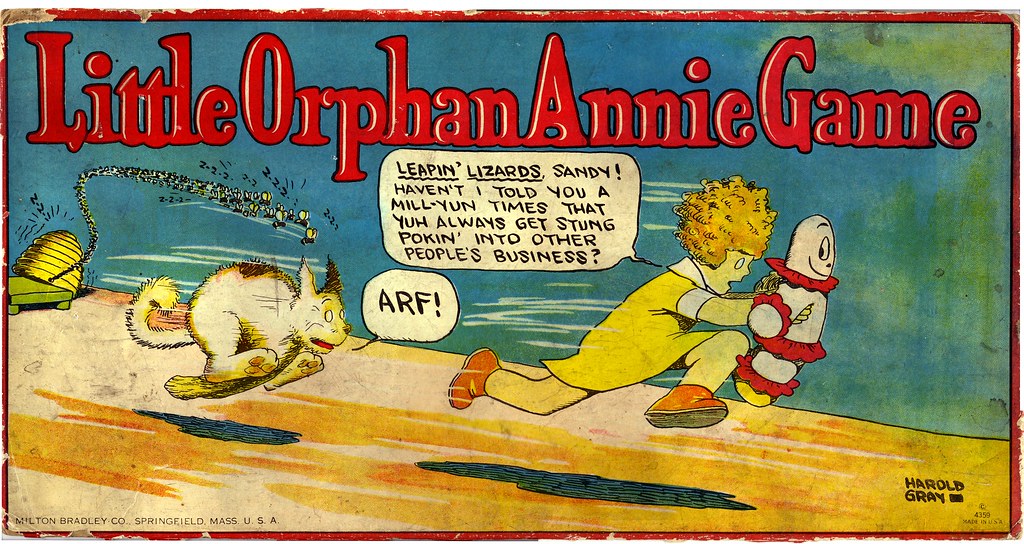
1. **The Enduring Legacy: From Comic Strip to Broadway Stage**The story of “Annie” began long before its cinematic debut, rooted in the popular American comic strip “Little Orphan Annie,” created by Harold Gray in 1924. This foundational narrative introduced audiences to Annie, a character embodying unwavering optimism despite facing adversity during the Great Depression. Her journey, often intertwined with the wealthy industrialist Oliver Warbucks, quickly became a cultural touchstone, reflecting the American spirit of perseverance.
The comic strip’s enduring appeal paved the way for its adaptation into a Broadway musical, which premiered in 1977. This stage production, featuring music by Charles Strouse, lyrics by Martin Charnin, and a book by Thomas Meehan, proved to be an instant triumph. It garnered critical acclaim and numerous accolades, including Tony Awards for its book, lyrics, and music, solidifying its place as a cherished work of American theater. The musical effectively transformed Gray’s original vision into a vibrant, song-filled spectacle.
The musical’s success was crucial in greenlighting a film adaptation, demonstrating broad audience appetite and providing a robust framework for cinematic development. The blend of a compelling storyline, memorable songs, and universally appealing characters made “Annie” a prime candidate for a big-screen interpretation. The transition from stage to film presented both exciting opportunities and significant challenges.
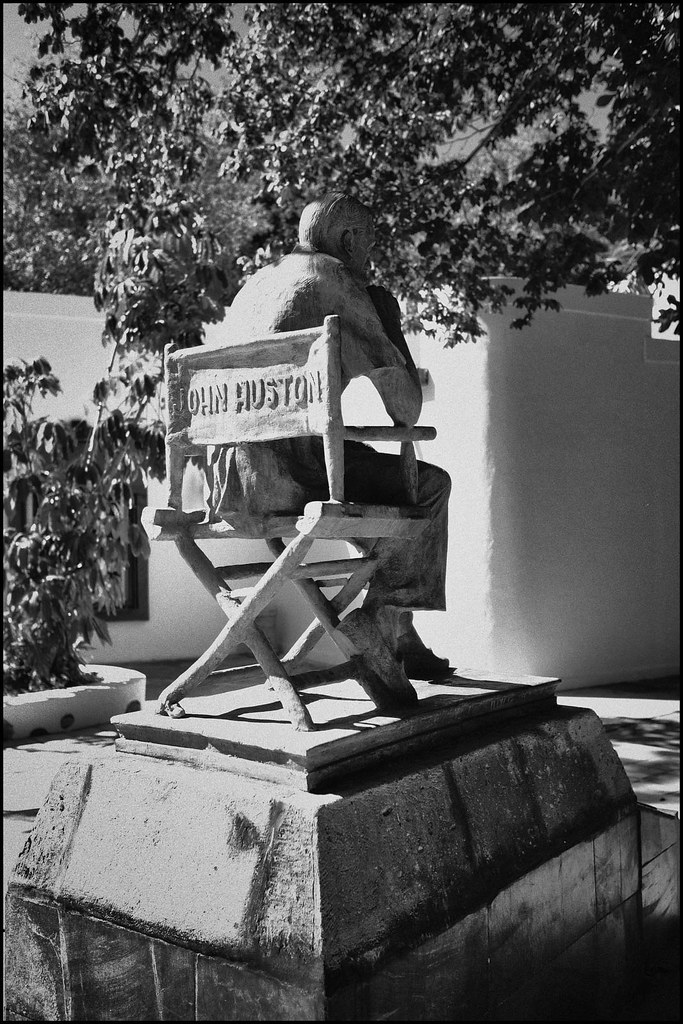
2. **Bringing Annie to the Big Screen: John Huston’s Directorial Challenge**The decision to adapt “Annie” into a feature film was met with anticipation, but the choice of director, John Huston, raised questions. Known for powerful dramas like “The Maltese Falcon” and “The African Queen,” Huston had never directed a musical in his four-decade career. This unconventional selection by producer Ray Stark was an “outsider risk,” reflecting Stark’s reputation as a “major gambler” who embraced “this kind of high risk situation.”
Huston’s lack of experience with the musical genre necessitated a unique approach, balancing his dramatic sensibilities with the inherent song-and-dance demands of the source material. His involvement signaled a departure from typical musical film conventions, suggesting a film that would delve deeper into the narrative’s emotional core while delivering spectacle. This directorial choice underscored the film’s ambitious nature, aiming for a distinct cinematic interpretation.
The collaborative efforts of Huston and producer Ray Stark, alongside choreographer Joe Layton, were essential. Stark reportedly wanted both Huston and Layton as executive producers, acknowledging the enterprise was “too large for one person.” This layered leadership was indicative of the film’s monumental scope and intricate coordination, marking a significant moment in Huston’s career.
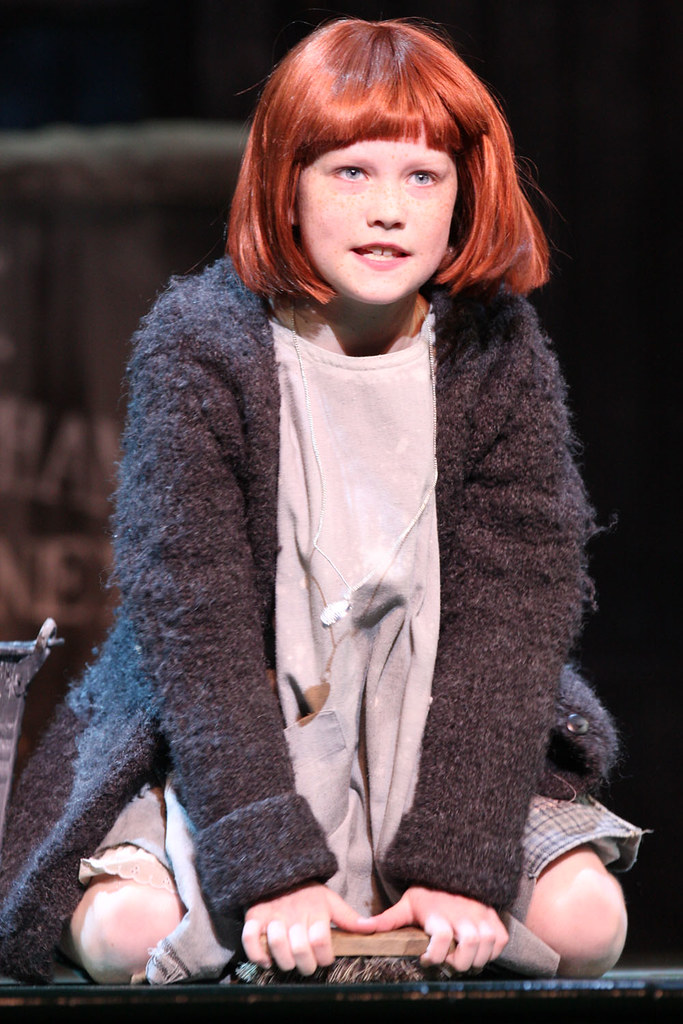
3. **The Search for Stardom: Casting the Iconic Characters**The casting process for “Annie” was a monumental undertaking, particularly for the titular role. The search for Annie was extensive, involving interviews with 9,000 girls across the United States, Canada, and Europe. This rigorous selection ultimately led to the discovery of Aileen Quinn, who, in her film debut, brought the spirited 10-year-old orphan to life, embodying her unwavering optimism and charm.
The adult roles also demanded performers of considerable talent. Albert Finney was cast as the initially gruff but ultimately benevolent billionaire, Oliver “Daddy” Warbucks. This decision came after prominent actors like Sean Connery and Cary Grant were considered, highlighting the importance of an actor who could portray Warbucks’s transformation from dismissive industrialist to loving father figure. Finney’s portrayal was crucial in anchoring the film’s emotional arc.
Equally significant were the choices for the villainous and comedic roles. Carol Burnett was selected as the cruel and alcoholic Miss Agatha “Aggy” Hannigan, after Bette Midler was considered. Tim Curry was cast as Hannigan’s sociopathic con-artist brother, Rooster, a role for which Jack Nicholson, Mickey Rooney, Mick Jagger, and Steve Martin had been contemplated. Bernadette Peters joined as Rooster’s girlfriend, Lily St. Regis, completing a formidable ensemble.
Read more about: A Deep Dive into Jenna Ortega’s Phenomenal Journey and What Her Major Career News Means for Fans Everywhere

4. **A Grand Vision: The Record-Breaking Budget and Production Scale**From its inception, the 1982 film “Annie” was conceived on an epic scale, reflected vividly in its substantial financial investment, making it one of the most expensive films of its era. Columbia Pictures won a bidding war for the Broadway musical rights, paying a record $9.5 million. This extraordinary sum set the tone for a production that would spare no expense in bringing the beloved story to the big screen.
The film’s final budget soared to over $35 million, with some reports suggesting it climbed to $59 million when marketing and distribution costs were included. This monumental expenditure positioned “Annie” as the most expensive project ever financed by Columbia Pictures up to that point. The production’s scale demanded vast resources, from elaborate sets and costumes to extensive location shooting and a large cast and crew.
The ambition extended beyond mere financial outlay; it represented a grand vision to translate the theatrical charm of the stage musical into a visually opulent film. This included creating the authentic atmosphere of 1933 New York City, requiring meticulous attention to detail and significant investment in production design. The sheer scale underscored the producers’ belief in the property’s potential to captivate a broad audience.

5. **Reimagining the Narrative: Key Screenplay Changes for the Film**The transition from stage musical to feature film often necessitates creative adjustments, and “Annie” was no exception. Screenwriter Carol Sobieski introduced several significant differences, shaping the narrative for the cinematic medium and production practicalities. One notable change involved the climactic setting and timing of Annie’s kidnapping and rescue. In the stage musical, these events unfold at Christmas with the villains apprehended at the Warbucks mansion.
The film, however, shifted this critical sequence to the eve of the Fourth of July, influenced by the summertime shooting schedule. This alteration led to Warbucks organizing a citywide search for Annie and a dramatic climax set on the Former Erie Railroad Bridge, adding a more action-oriented dimension. Additionally, Sobieski incorporated Punjab and The Asp, Warbucks’s bodyguards from the original comic strip, giving them supporting roles that expanded the film’s narrative scope.
A profound alteration involved Miss Hannigan’s character arc. In the stage musical, she is fully aware of Rooster’s murderous intentions. The film, however, introduced a redemptive element, depicting her desperately trying to save Annie from Rooster on the bridge, a significant departure from established characterization. As noted in Thomas Meehan’s 1980 novelization, Miss Hannigan shows “no qualms whatsoever about Annie being killed,” making the film’s portrayal a distinct reinterpretation.

6. **The Soundtrack’s Evolution: New Songs and Notable Omissions**A cornerstone of “Annie”‘s success was its memorable score, and the film adaptation undertook a careful, yet at times controversial, re-evaluation of its musical numbers. The cinematic version featured five entirely new songs explicitly composed for the film, expanding the auditory landscape of Annie’s world. These additions included “Dumb Dog,” “Sandy,” “Let’s Go to the Movies,” “Sign,” and “We Got Annie,” designed to enhance specific plot points or character developments unique to the film.
Conversely, the adaptation also saw the omission of several songs from the original Broadway production. Tunes such as “We’d like to Thank You, Herbert Hoover,” “N.Y.C,” “You Won’t Be an Orphan for Long,” “Something Was Missing,” “Annie,” and “New Deal for Christmas” were cut. These decisions often reflected the film’s narrative shifts, pacing requirements, or thematic emphasis, such as prioritizing Annie’s personal journey.
These changes were not universally embraced. Martin Charnin, the lyricist of the original musical, openly expressed dissatisfaction, lamenting that “The movie distorted what this musical was.” He attributed this to a lack of “creative control” after selling the rights for “a considerable amount of money.” Charnin criticized director John Huston and producer Ray Stark for “major changes” that “destroyed the essence of Annie,” citing the downplaying of “Tomorrow” because “Stark thought it was corny.”
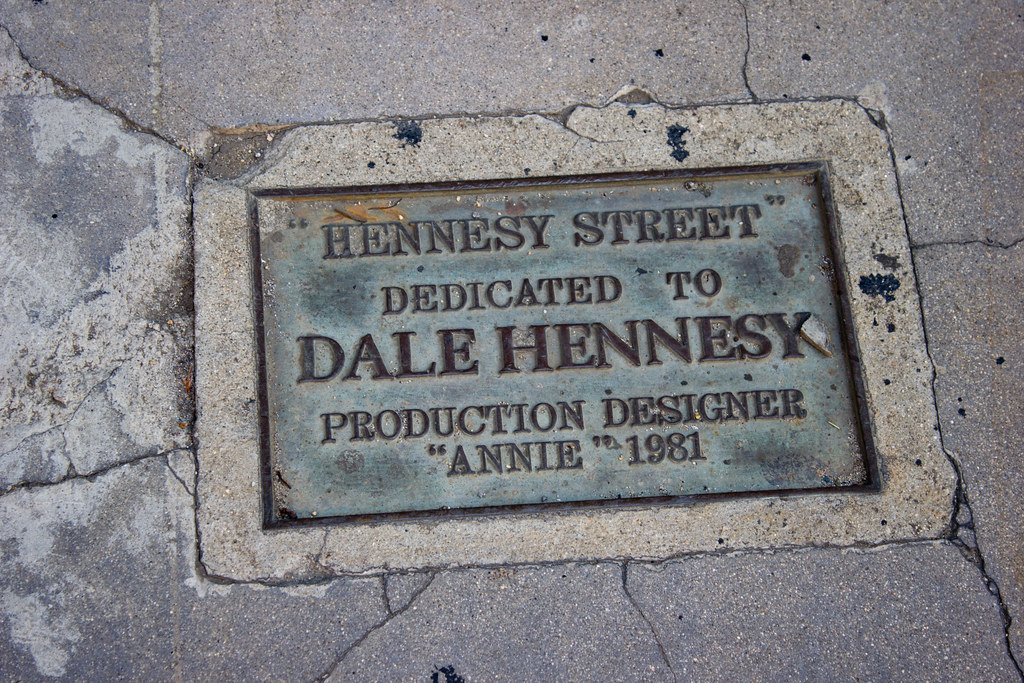
7. **Crafting the World of 1933 New York: Filming Locations and Set Design**Bringing the bustling, Depression-era New York City of 1933 to life for “Annie” required extensive and meticulous work on filming locations and set design. Principal photography, spanning six weeks in 1981, utilized real-world sites and custom-built sets. Monmouth College, now Monmouth University, in West Long Branch, New Jersey, specifically Wilson Hall and the Shadow Lawn Mansion, served as the grand exteriors for Oliver Warbucks’s opulent mansion, providing necessary scale and architectural grandeur.
Beyond the mansion, other crucial external settings were chosen with care. The NX Bridge, an abandoned railroad bridge over the Passaic River in Newark, New Jersey, became the dramatic backdrop for one of the film’s climactic scenes. This choice added grit and realism to the intense chase and rescue sequence, grounding the fantastical elements of the story in a tangible urban landscape, and lending undeniable authenticity to the visual narrative.
The film’s streetscapes were primarily achieved at Warner Bros. Burbank Studios. Production designer Dale Hennesy meticulously overhauled the old “Tenement Street” back lot set, transforming it into a convincing replica of New York City streets. This involved outfitting facades with actual New York fire escapes and other imported architectural treatments. In a poignant tribute, the back lot set was later renamed “Hennesy Street” in honor of the late production designer, who passed away during filming.

8. **The “Easy Street” Reshoot Controversy: A Costly Creative Pivot**The production of “Annie” was marked by ambition, which extended to its musical numbers. Initially, the filmmakers envisioned “Easy Street” as the crowning musical spectacle of the movie. To realize this grand vision, an elaborate outdoor street set was custom-built, a significant investment that reportedly cost more than $1 million. This dedicated set was to serve as the backdrop for what was intended to be the film’s most elaborate and memorable performance sequence.
Following a full week of intensive shooting for this highly anticipated number, the production team reviewed the daily footage. However, the initial enthusiasm gave way to critical assessment, and the scene, despite its colossal investment in time and resources, was deemed unsatisfactory. Reports indicated that the version was considered “overstuffed” and, perhaps more critically, “sour,” failing to capture the intended spirit or impact. This candid evaluation led to a difficult and costly decision to scrap the entire sequence.
Almost two months after principal photography had officially wrapped, a rare and expensive re-shoot was undertaken. The new rendition of “Easy Street” departed significantly from the original outdoor concept, instead being filmed indoors. This approach aimed to replicate the intimate and distinct ambiance that characterized the song in the original stage musical, a choice reflecting a pivot towards a more theatrical, rather than overtly cinematic, interpretation of the number. The decision underscored the commitment to the film’s artistic quality, even at considerable additional expense and logistical challenge.

9. **The Soundtrack’s Commercial Journey and Chart Success**The 1982 film “Annie” was accompanied by a soundtrack album released on June 18, 1982, featuring the memorable music composed by Charles Strouse and lyrics by Martin Charnin. This album served as a vital component of the film’s overall appeal, bringing the beloved songs to a wider audience beyond the cinematic experience. It included all the iconic tracks performed by the film’s cast, ranging from “Tomorrow” sung by Aileen Quinn and the Orphans to “Little Girls” by Carol Burnett and “Easy Street” by Burnett, Tim Curry, and Bernadette Peters.
The soundtrack quickly found commercial success, charting in several countries and demonstrating its widespread popularity. In Canada, it reached a peak position of 35 on the Top Albums/CDs (RPM) chart. Across the Atlantic, it performed even better, climbing to number 14 on the Dutch Albums (Album Top 100) chart. In the UK, the album managed to secure a spot on the Official Albums Chart Top 100, peaking at 88, indicating a solid, though more modest, presence.
Perhaps its most significant commercial triumph was in the United States, where the album reached number 35 on the prestigious Billboard 200 chart in August 1982. This strong showing was further cemented by its certification. The Recording Industry Association of America (RIAA) bestowed Platinum status upon the “Annie” soundtrack, signifying shipments of over 1,000,000 units. This achievement underscored the album’s significant reach and enduring appeal among American audiences, establishing it as a commercially successful release that transcended the film’s box office performance.

10. **A Kaleidoscope of Critical Reactions: Mixed Reviews and Sharp Critiques**Upon its release, “Annie” garnered a distinctly mixed bag of critical reviews, indicating a divided reception among film critics. Aggregator Rotten Tomatoes reported an approval rating of 49% based on 37 reviews, with an average score of 5.3/10. Its critical consensus summarized the sentiment, stating, “John Huston proves an odd choice to direct, miring Annie in a sluggish, stagebound mess of an adaptation, but the kids are cute and the songs are memorable.” Similarly, Metacritic assigned the film a weighted average score of 39 out of 100 from 10 critics, generally signifying “unfavorable” reviews.
Despite the overall mixed reception, some critics found elements to praise. Roger Ebert awarded the film three stars out of four, describing it as “so rigorously machine-made, so relentlessly formula” that it “is not about anything.” However, he conceded that he “sort of enjoyed the movie,” citing “the energy that was visible on the screen, and the sumptuousness of the production numbers, and the good humor of several of the performances — especially those by Albert Finney, as Daddy Warbucks, and Carol Burnett, as the wicked orphanage supervisor, Miss Hannigan. Aileen Quinn sort of grew on me, too.” Vincent Canby of The New York Times echoed a similar sentiment, stating, “‘Annie’ is far from a great film but, like the Music Hall in the good old days, it is immaculately maintained and almost knocks itself out trying to give the audience its money’s worth. They don’t build movies like this anymore.”
Conversely, many reviews were sharply critical of the film’s execution. Variety lamented that “Whatever indefinable charm the stage show has is completely lost in this lumbering and largely uninteresting and uninvolving exercise, where the obvious waste reaches almost Pentagonian proportions.” Gene Siskel of the Chicago Tribune called it “a bit of a letdown,” criticizing Quinn’s portrayal as “one of those self-conscious stage kids” and the four new songs as “not the least bit memorable,” though he singled out Finney’s performance as the best. Sheila Benson of the Los Angeles Times felt the film “staggers under monstrous production numbers,” wishing for “an atmosphere of innocence, warmth and inventiveness” to generate joy. Gary Arnold of The Washington Post concisely panned it as “Overproduced and underinspired,” while Pauline Kael of The New Yorker found it “ungainly,” noting that “Every sequence seems to be trying too hard to be upbeat and irresistible.”
Beyond professional film critics, Martin Charnin, the lyricist of the original Broadway musical, expressed profound disappointment. In a 1996 interview, he “dismissed the adaptation and its production,” lamenting, “The movie distorted what this musical was.” He attributed this to a lack of “creative control” after selling the rights for “a considerable amount of money,” and openly criticized director John Huston and producer Ray Stark for “major changes” that “destroyed the essence of Annie.” Charnin specifically pointed to Albert Finney’s Warbucks as “an Englishman who screamed,” Carol Burnett’s Hannigan as “a man-crazy drunk,” and the overall “cute-ed up” portrayal of Annie. He also highlighted the downplaying of the hit song “Tomorrow,” a decision he attributed to Stark thinking “it was corny,” further underscoring the creative disconnect.
11. **The Complex Box Office Journey: Commercial Success, Yet Financial Shortfall**”Annie” commenced its theatrical run on May 21, 1982, opening in 14 theaters across key cities including New York, Los Angeles, Dallas, and Toronto. This limited release strategy allowed for initial buzz before its wider debut. The film expanded significantly on June 18, 1982, rolling out to 1,102 theaters, marking its broad introduction to American audiences during the crucial summer movie season.
During its first wide weekend, the film grossed $5.3 million, positioning it at number 5 at the US box office. This initial performance demonstrated a solid audience interest, particularly given the competitive cinematic landscape of 1982. The film continued to attract viewers, ultimately accumulating a total domestic gross of $57 million in the United States and Canada. This figure was substantial enough to make “Annie” the tenth highest-grossing film of 1982, a testament to its widespread appeal and the enduring popularity of the underlying story and songs.
Despite its impressive gross revenue and its standing as a top-ten film for the year, the financial outcome for Columbia Pictures was complicated. The film had been conceived on an extraordinarily grand scale, with a production budget of $35 million, and some estimates suggesting costs as high as $59 million when marketing and distribution expenses were factored in. Consequently, due to this remarkably high cost, “Annie” ultimately “failed to make a profit for Columbia Pictures upon release,” turning its commercial success into a financial challenge for the studio.
Product on Amazon: The Journey Sheet Music
Binding: Kindle Edition Product Group: Digital Ebook Purchas
Price: 7.69 USD
Shopping on Amazon >>

12. **Awards Season: Nominations, Wins, and Unconventional Recognitions**The 1982 film “Annie” received a range of acknowledgements during awards season, encompassing both prestigious nominations and more unconventional critiques. At the 55th Academy Awards, the film was nominated in two categories, reflecting its technical and musical merits. Dale Hennesy and Marvin March received a nomination for Best Art Direction for their meticulous work in recreating the 1930s aesthetic, while Ralph Burns was nominated for Best Original Song Score and Its Adaptation, recognizing the film’s musical integrity and arrangement.
Beyond the Oscars, “Annie” also garnered nominations from other notable awards bodies. The British Academy Film Awards (BAFTA) recognized the film’s iconic theme, nominating “Tomorrow” for Best Original Song Written for a Film, crediting Charles Strouse for the music and Martin Charnin for the lyrics. The Golden Globe Awards offered recognition for the lead actresses, with Carol Burnett earning a nomination for Best Actress in a Motion Picture – Musical or Comedy for her portrayal of Miss Hannigan, and Aileen Quinn receiving nominations for both Best Actress in a Motion Picture – Musical or Comedy and New Star of the Year – Actress, highlighting her breakout performance.
However, the film’s mixed critical reception also translated into nominations from less flattering awards. “Annie” received several nominations at the Golden Raspberry Awards, also known as the Razzies, which recognize the worst in film. Ray Stark was nominated for Worst Picture, and John Huston for Worst Director. Carol Sobieski received a nomination for Worst Screenplay. Most notably, Aileen Quinn, despite her Golden Globe recognition, “won” the Golden Raspberry for Worst Supporting Actress and was also nominated for Worst New Star, underscoring the divided critical opinions on her performance. Similarly, Ray Stark received a nomination for Worst Picture at the Stinkers Bad Movie Awards.
On a more positive note for its young talent, “Annie” was recognized at the Young Artist Awards. The film received a nomination for Best Motion Picture – Animated, Music or Fantasy, celebrating its appeal within family and musical genres. Aileen Quinn ultimately won the award for Best Young Motion Picture Actress, a significant achievement for her debut role, and Toni Ann Gisondi, who played Molly, also earned a nomination for Best Young Supporting Actress in a Motion Picture, further highlighting the strong performances from the film’s younger cast members.
Product on Amazon: Star of the Week! Recognition Awards
Brand: Trend Enterprises
Binding: Office Product Product Group: Office Product
Price: 8.99 USD
Rating: 4.5 Total reviews: 132
Features:
1. Cheerful character delivers an esteem-building message
2. Personalize and customize your message for each child
3. 30 awards
4. Awards measure 5 1/2″ x 8 1/2″
5. Ideal for teaching: Kindergarten to 3rd Grade (Ages 5 to 9)
Shopping on Amazon >>

13. **An Enduring Presence: Legacy Through Home Media and Television Broadcasts**”Annie”‘s journey to audiences extended well beyond its theatrical run, cementing its place in popular culture through various home media formats and television broadcasts. The film made its initial foray into home entertainment on November 5, 1982, with releases on VHS, Betamax, and CED Videodisc via RCA/Columbia Pictures Home Video. Its popularity led to numerous re-issues throughout the 1980s and 1990s, including a “Broadway Tribute Edition” in 1997 to coincide with the original play’s 20th-anniversary Broadway revival, demonstrating its consistent demand.
As technology evolved, so did “Annie”‘s home media presence. Two widescreen LaserDisc versions were released, in 1989 and 1994, offering enhanced viewing experiences for enthusiasts. The transition to DVD saw a widescreen edition launched on December 12, 2000. However, a “Special Anniversary Edition” DVD released on January 13, 2004 (just four days before producer Ray Stark’s death), controversially opted for a pan and scan transfer despite the earlier widescreen DVD. Film critic Glenn Erickson of DVD Talk criticized this decision, calling the pan and scan transfer “an abomination that’s grainy and lacking in color” and noting the irony that its featurette contained clips in the correct aspect ratio. Fortunately, some Region 2 countries, including the United Kingdom, received widescreen versions of this edition.
The film continued its legacy into high-definition formats. A “sing-along edition” was released on Blu-ray on October 2, 2012, celebrating both the film’s 30th anniversary and the 35th anniversary of the Broadway version, which was set for a revival. More recently, “Annie” received a premium upgrade with its release on 4K Blu-ray on October 25, 2022, as part of the “Columbia Classics Collection: Volume 3.” This remastered edition included the full 1932 film “Little Orphan Annie” and several new special features, ensuring its continued availability and appeal to new generations of viewers.
In addition to home video, “Annie” made a significant impact on television. It had its national television debut on February 24, 1986, airing on the NBC Monday Night Movie. To fit within the two-hour time slot with commercials and adhere to broadcast restrictions, the film was presented in pan-and-scan format and its original running time of 128 minutes was cut down to 96 minutes. Despite these edits, the television broadcasts ensured that the story of Annie continued to reach a vast audience, solidifying its place as a beloved family classic.
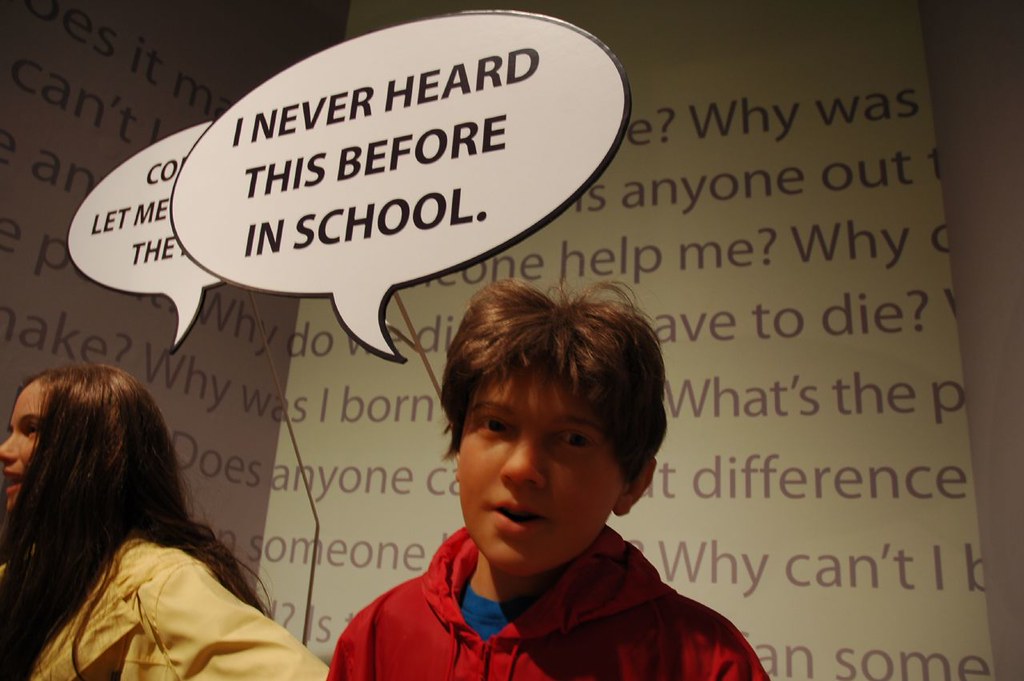
14. **A Lasting Cultural Imprint: Inspiring Adaptations and Artistic Interpretations**The enduring narrative of “Annie” extended its reach beyond the cinematic screen through various adaptations, demonstrating its profound and lasting cultural influence. Marvel Comics published a comic book adaptation of the film, which was serialized in *Marvel Super Special #23* in the summer of 1982, with script by Tom DeFalco and art by Win Mortimer and Vince Colletta. This adaptation was also made available as an *Annie Treasury Edition* and as a limited series, allowing comic book readers to engage with the film’s story in a different visual medium and expanding its audience base considerably.
Internationally, the story’s universal themes of hope and perseverance resonated deeply, inspiring artistic interpretations in other cultures. The 1983 Malayalam movie *Ente Mamattukkuttiyammakku* from India was reported to have drawn inspiration from the 1982 “Annie” film. A decade later, the 1993 Hindi film *King Uncle*, starring Jackie Shroff and Shahrukh Khan, was also noted to be loosely based on the same source material, showcasing the global appeal and adaptability of the “Annie” narrative across diverse cinematic traditions.
The film’s success also paved the way for a series of direct and indirect adaptations and sequels, further solidifying its legacy. In 1995, a made-for-television sequel titled *Annie: A Royal Adventure!* aired on ABC. This sequel, starring Ashley Johnson as Annie and Joan Collins, continued the orphan’s story in England, though it notably omitted most songs and featured an entirely new cast, with none of the original 1982 film actors returning.
This was followed by two significant full-length film adaptations. In 1999, Disney and Columbia Pictures collaborated to produce a second film adaptation, a made-for-television movie broadcast on ABC. This version, starring Alicia Morton as Annie and Kathy Bates as Miss Hannigan, was generally well-received and earned two Emmy Awards, distinguished for being truer to the original stage musical and adopting a more comedic tone than its 1982 predecessor. Then, in 2014, a contemporary remake of “Annie” was released theatrically, produced by Will Smith and featuring new songs by Jay-Z, with Oscar nominee Quvenzhané Wallis in the title role. Despite receiving poor critical reviews, this version was a commercial success, earning $133 million on a $65 million budget. Further cementing its enduring presence, a fourth adaptation, presented as a live production of the musical, was performed on NBC on December 2, 2021, illustrating the continuous artistic reinterpretation and cultural relevance of “Annie” through decades of evolving media landscapes.
From its comic strip origins to its various big-screen and small-screen incarnations, the tale of Annie has proven its enduring power. The 1982 film, despite its complex production and mixed critical reception, served as a foundational cinematic interpretation that sparked a continuous dialogue about adaptation, creative control, and the timeless appeal of a little orphan’s unwavering optimism. It stands not merely as a film, but as a cultural touchstone that has consistently found new ways to sing its story to the world, reminding us all that “Tomorrow” truly is just a day away.”



